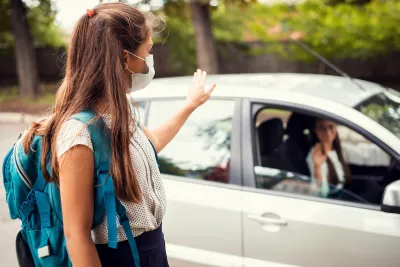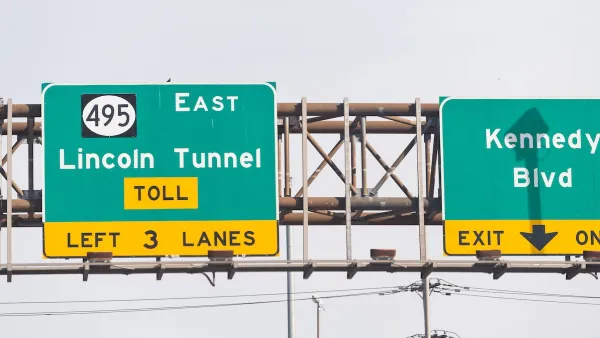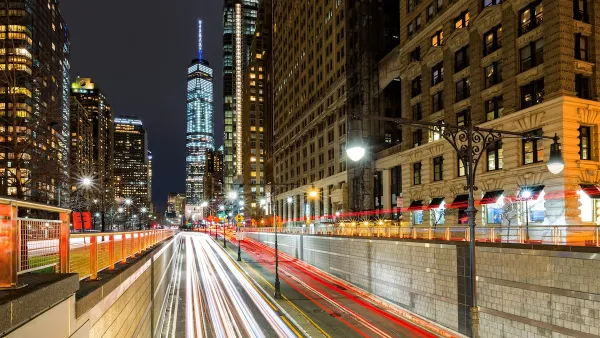School drop-off lines are becoming longer and more isolating than ever.

With more parents than ever before driving their children to school, school drop-offs are becoming a growing pain point for traffic in cities around the country, writes Kendra Hurley in The Atlantic.
The problem is multi-faceted: “For families, the long waits are at best a stressful time suck and at worst a work disruptor. Some city planners take the car line as proof of our failure to create the kind of people-centered neighborhoods families thrive in. Climate scientists might consider it a nitrogen-oxide-drenched environmental disaster. Scolds might rail at what they see as helicopter parents chaperoning their kids everywhere. Some pediatricians might point out the health threats: sedentary children breathing fumes or at risk of being hit by a car.”
For Hurley, another important aspect of the ever-growing school drop-off line is the attendant isolation. “With so many kids now attending schools more than a mile from their home, even the most beautiful, pedestrian-friendly streets may not be enough to lure passengers to the sidewalk. A leisurely stroll to a neighborhood school has been supplanted by the smelly, alienating car line.”
Hurley acknowledges that walking, biking, or public transit are not readily available modes for many American students. “But governments, schools, and communities can create new programs to fill the transportation gap” by proactively arranging walking and biking groups and urging local officials to add better bike and pedestrian infrastructure to their streets. “For families that must drive, the humble carpool can offer the same convenience and safety from crime as driving on your own, while also building camaraderie and minimizing emissions.”
FULL STORY: How School Drop-Off Became a Nightmare

National Parks Layoffs Will Cause Communities to Lose Billions
Thousands of essential park workers were laid off this week, just before the busy spring break season.

Retro-silient?: America’s First “Eco-burb,” The Woodlands Turns 50
A master-planned community north of Houston offers lessons on green infrastructure and resilient design, but falls short of its founder’s lofty affordability and walkability goals.

Delivering for America Plan Will Downgrade Mail Service in at Least 49.5 Percent of Zip Codes
Republican and Democrat lawmakers criticize the plan for its disproportionate negative impact on rural communities.

Test News Post 1
This is a summary

Test News Headline 46
Test for the image on the front page.

Balancing Bombs and Butterflies: How the National Guard Protects a Rare Species
The National Guard at Fort Indiantown Gap uses GIS technology and land management strategies to balance military training with conservation efforts, ensuring the survival of the rare eastern regal fritillary butterfly.
Urban Design for Planners 1: Software Tools
This six-course series explores essential urban design concepts using open source software and equips planners with the tools they need to participate fully in the urban design process.
Planning for Universal Design
Learn the tools for implementing Universal Design in planning regulations.
EMC Planning Group, Inc.
Planetizen
Planetizen
Mpact (formerly Rail~Volution)
Great Falls Development Authority, Inc.
HUDs Office of Policy Development and Research
NYU Wagner Graduate School of Public Service





























